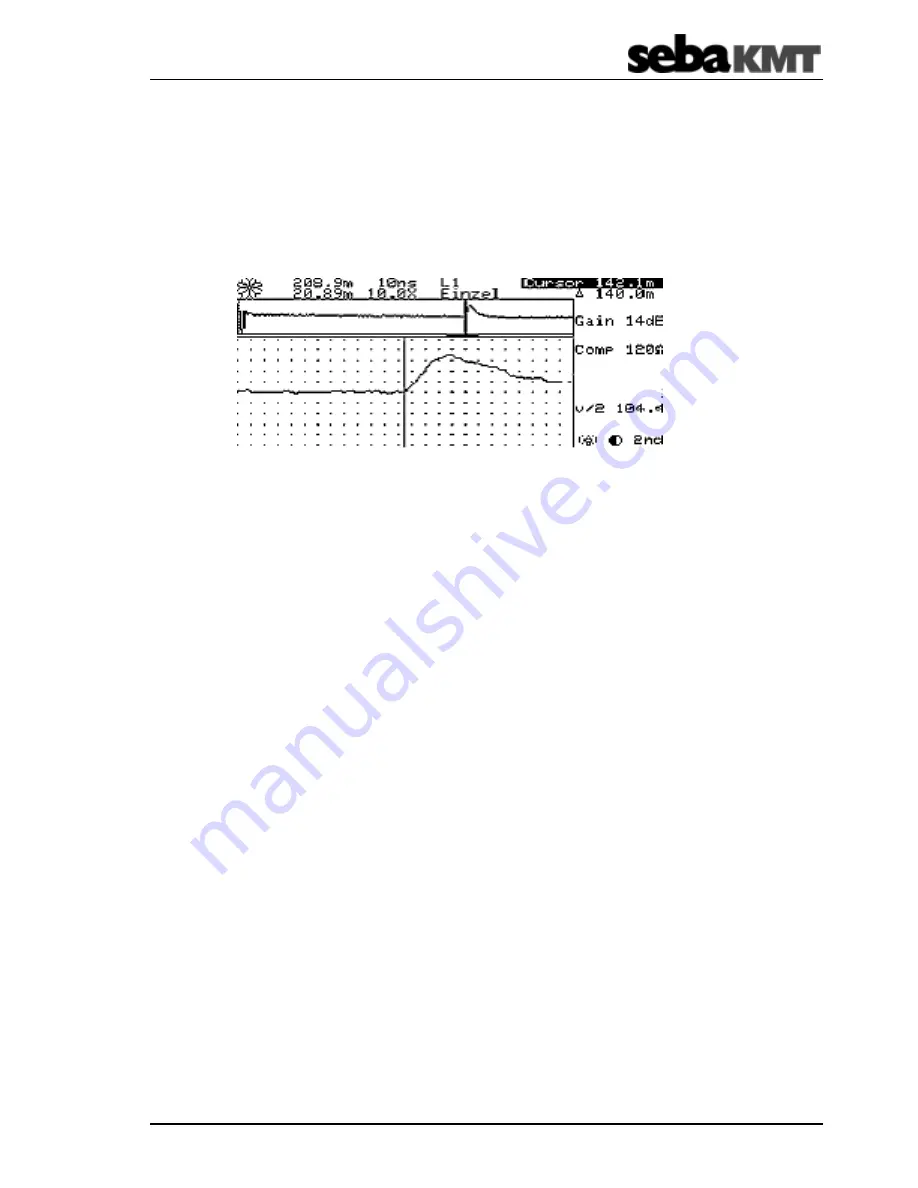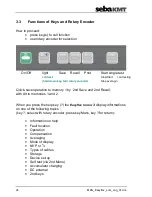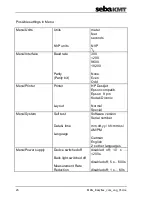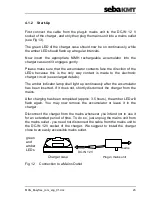
MAN_Easyflex_com_eng_01.doc
31
3.8.1.2 Faults Causing a Positive Reflection
(1) Open circuit: Open circuit means that one or both conductors of a pair
of conductors are broken or have become detached. This will cause a
positive reflection, see Fig 5.
Fig 5 Type of Fault Causing a Positive Reflection
(2) Resistance faults: If a cable is not properly connected in a junction
box, increased contact resistance will occur. This type of fault
generates a positive reflection in a size which is dependent on the
quality of the connection resp. its resistance.
(3) Shield interrupt means that the metal shield of a cable is broken or has
become detached. To locate such faults and to suppress noise signals
on the display, connect the test leads to the shield and to as many
conductors of the cable as possible. This type of fault generates a fault
reflection the size of which is dependent on the resistance of the
interrupt.
(4) Crossed lines (”split pairs”) and restored reversed lines occur when a
telecommunication cable is twisted or untwisted. Usually this may
happen at a cable joint. This phenomenon is one of the main causes
of crosstalk interference. Reversed wires in an untwisted cable will
generate a positive error reflection. If an individual cable is twisted, a
negative error reflection appears. As the distance between the points
of crossing and crossing is usually very small, both reflections occur
almost simultaneously and appear as a single weak reflection.
Содержание Easyflex Com
Страница 2: ...2 MAN_Easyflex_com_eng_01 doc...
Страница 3: ...MAN_Easyflex_com_eng_01 doc 3 Easyflex Com compact and light weight Time Domain Reflectometer...
Страница 4: ...4 MAN_Easyflex_com_eng_01 doc...
Страница 8: ...8 MAN_Easyflex_com_eng_01 doc...
















































